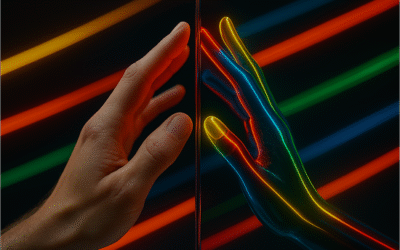Over the last decade, AI assistants have evolved from simple voice-activated tools to increasingly intelligent and capable digital entities. Many of us have grown accustomed to asking Siri, Alexa, or Google Assistant to set reminders, answer trivia, or play music. These tools have become part of everyday life—but their role has largely remained that of a general-purpose helper.
Now, a new generation of AI has emerged: Pre-Trained Assistants (PTAs). Unlike virtual assistants that are built for convenience, PTAs are designed for structured work within professional environments. They represent a shift in how we think about AI—not as background utilities, but as digital employees with defined roles, responsibilities, and access to business systems.
From General to Specialized
Traditional virtual assistants focus on broad usability:
-
They support multiple, unrelated tasks
-
They rely on predefined commands or generic language models.
-
They are mostly used by individuals, not organizations.
In contrast, PTAs are task-specific, organization-aware, and deeply integrated into company operations. Each PTA is assigned a clear job function—for example:
- Sales Follow-up Assistant
- Inventory Management Agent
- Customer Support Coordinator
PTAs are not meant to chat idly or fulfill miscellaneous requests. They are structured AI workers, optimized to perform within a business process.
What Makes PTAs Different?
Here’s how PTAs distinguish themselves from conventional virtual assistants:
| Feature | Virtual Assistant | Pre-Trained Assistant (PTA) |
|---|---|---|
| Scope | General-purpose | Role-specific |
| Integration | Minimal or app-level | Deep ERP/system integration |
| Context | User-level context | Business-level + task-level context |
| Communication | One-on-one with user | Cross-team, cross-role coordination |
| Behavior Control | Hard-coded or generic | Tuned via Company DNA and Employer Expectations |
| Output | Utility-based | Task-completion oriented |
Built for Business, Not Just for Use
PTAs are created inside the AIS (AI Integration Suite), a framework that provides:
- A structured 10-layer Business Code to define behavior.
- Seamless integration with back-office systems.
- A Team Assistant that acts as a coordinator between human employees and PTAs.
This ecosystem allows PTAs to:
- Retrieve and update business records.
- Communicate with other PTAs.
- Adapt to organizational tone, workflow, and rules.
In other words, PTAs don’t just assist—they participate in business operations, like any other employee would.
The Rise of the Digital Workforce
The rise of PTAs reflects a broader trend: the emergence of AI as workforce infrastructure, not just user-facing technology.
Where virtual assistants are limited to helping individuals manage their time or information, PTAs scale across departments, support entire workflows, and handle real operational load.
This evolution matters because businesses increasingly need:
- Scalable labor without hiring at the same rate.
- Consistency in task execution.
- Systems that can operate 24/7 without burnout or oversight.
PTAs answer that call—not as replacements for humans, but as intelligent, specialized teammates who complement human capabilities.
Conclusion
Virtual assistants introduced us to the idea that AI can help with everyday tasks. PTAs take that idea further—embedding AI directly into the structure of work. They’re not gadgets. They’re part of the team.
As businesses seek more efficient, responsive, and intelligent ways to operate, PTAs are becoming the next step in digital transformation: not just smarter tools, but smarter colleagues.



